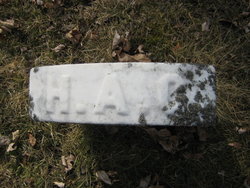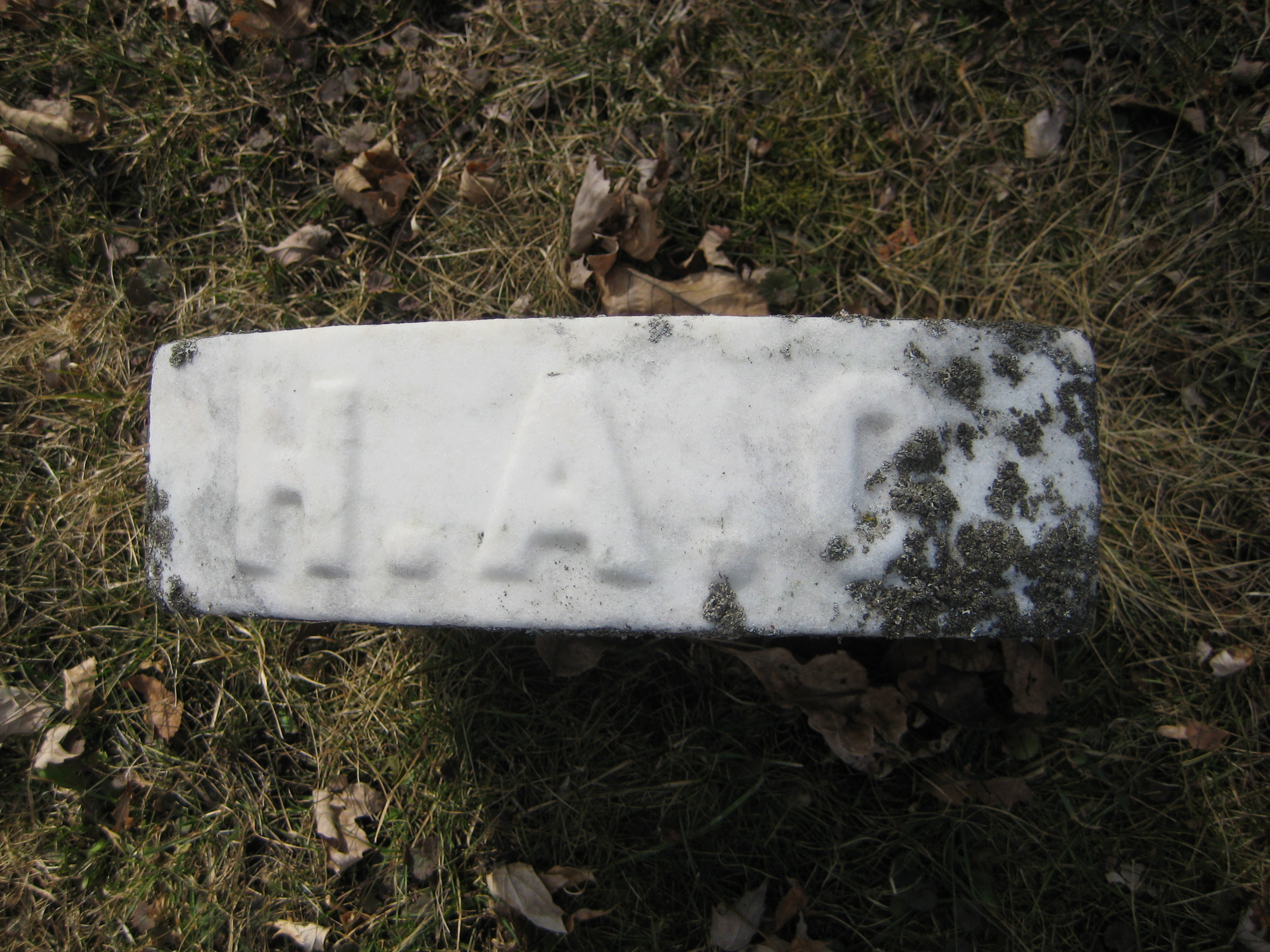Source: Darwin Colburn Gallup, Josephine Middleton Peck, John Douglas Gallup, Gallup Family Association, p. 143. Gallup Family Association, 1966 - 376 pages.
________________
News was brought to the city this morning of the death of H. A. Gallup which occurred at his home in the town of Algoma, just south of this city, at half past nine, after extended sickness from consumption.
The deceased leaves two sons. Percey and E. HI. Gallup, living in the town of Algoma, and Mrs. Aurclia Gallup, a daughter, who resides in California. Two sisters of the deceased also reside in California, and R. C. Brown a nephew is living in Oshkosh.
Webster Stanley was the first actual white settler on the present site of this city and he was followed by Chester Gallup and family, of which H. A. Gallup was a member, who came here from Ohio in 1836. At that time the land south of the river was owned by the government and that north of the river was held by the Indians.
In August 1836, Gov. Dodge effected a treaty for the purchase of the latter and Stanley and Gallup each bought, the latter taking 170 acres at the very mouth of the river, which is that portion where the Second ward is now located. A shanty was moved upon Mr. Stanley's claim, in which both families lived until the following November, when Mr. Gallup built a log house upon his own land.
The first visit to this section was made by Henry Gallup and his brother, who left their father, mother and sister to look up a new location. Their trip from Ohio to Lake Winnebago is told in a letter written by the deceased himself and published in Harnep's history of Winnebago county, and from it the statement is obtained that they first struck the river at a point a little above the Algoma bridge, where at that time there was a log house owned by a half breed named Knaggs, the owner of a ferry then run by Walter Stanley.
The boys soon after started back in a large bark canoe after the family and passing down the river saw for the first time the present site of the Second City. Reaching Green Bay they returned with the other members and buying land located as has been recorded above.
During the first winter the Stanley and the Gallup families were the only ones nearer than Neenah and Fond du Lac and their only neighbors were some 500 Indians who were wintering around them.
In 1837 they raised their first crops and sowed the first acre of winter wheat ever sowed in Wisconsin, the most of which when grown was appropriated by the Indians. In the winter of the same year the families of the Messrs. Evans and Wright arrived.
Originally the point on the north side of the river, Mr. Gallup wrote, "was called Athens, and goods shipped from Green Bay were so marked, but at a meeting of inhabitants, called for the purpose of choosing a name for this particular locality, which was held at the house of George Wright, and which was attended by all the French and half breeds from as far up the river as Butte des Morts, and who in fact had no interest in the place or its name, it was decided by an even vote that the place or locality should be known hereafter and forever as "Oshkosh." But it came nearer to universal suffrage than any election ever attended, and smoking was participated in to that extent that you could not recognize, a person across the room."
On March 8, 1838 the first marriage ever celebrated in Oshkosh, occurred at the residence of the father of the deceased. It was performed by Rev. S.8. Peet, who united in matrimony Joseph Jackson and Miss Emeline Wright.
Chester Gallup died in 1849. and the city property left by him to H. A. and John having been sold by them for village lots, they moved to farms south of the city where the deceased continued to reside until the time of his death.
Henry A. Gallup, as can be seen from the imperfect sketch given above, bas been identified with this city from its earliest history, and has lived to see the town grow from a single log hut to the populous and important place it now is. His life was filled with interesting reminiscences of the development of a wilderness to a wealthy and thickly settled country and by his death one of the last links connecting the city with the past has been broken.
The deceased was a man universally liked and respected and always spoken of in a kindly manner by his acquaintances. Genial andl hospitable he made many friends and was without enemies. His life was always passed in the occupation of a farmer so that he never mingled to an extent in the rush of manufacturing business which has characterized the growth of the city.
About a year ago he started on a trip to California for his health but was recalled by the death of his wife. Previous to this he had been in the Golden state for a short time. The funeral will take place Wednesday afternoon at two o'clock, from the residence, unless word is received from the daughter in California that she will come. In that case it will be deferred until her arrival.
The Oshkosh Northwestern
1886, Mon. Jul 26 Page 4
Contributor: JAZ (48097722)
Source: Darwin Colburn Gallup, Josephine Middleton Peck, John Douglas Gallup, Gallup Family Association, p. 143. Gallup Family Association, 1966 - 376 pages.
________________
News was brought to the city this morning of the death of H. A. Gallup which occurred at his home in the town of Algoma, just south of this city, at half past nine, after extended sickness from consumption.
The deceased leaves two sons. Percey and E. HI. Gallup, living in the town of Algoma, and Mrs. Aurclia Gallup, a daughter, who resides in California. Two sisters of the deceased also reside in California, and R. C. Brown a nephew is living in Oshkosh.
Webster Stanley was the first actual white settler on the present site of this city and he was followed by Chester Gallup and family, of which H. A. Gallup was a member, who came here from Ohio in 1836. At that time the land south of the river was owned by the government and that north of the river was held by the Indians.
In August 1836, Gov. Dodge effected a treaty for the purchase of the latter and Stanley and Gallup each bought, the latter taking 170 acres at the very mouth of the river, which is that portion where the Second ward is now located. A shanty was moved upon Mr. Stanley's claim, in which both families lived until the following November, when Mr. Gallup built a log house upon his own land.
The first visit to this section was made by Henry Gallup and his brother, who left their father, mother and sister to look up a new location. Their trip from Ohio to Lake Winnebago is told in a letter written by the deceased himself and published in Harnep's history of Winnebago county, and from it the statement is obtained that they first struck the river at a point a little above the Algoma bridge, where at that time there was a log house owned by a half breed named Knaggs, the owner of a ferry then run by Walter Stanley.
The boys soon after started back in a large bark canoe after the family and passing down the river saw for the first time the present site of the Second City. Reaching Green Bay they returned with the other members and buying land located as has been recorded above.
During the first winter the Stanley and the Gallup families were the only ones nearer than Neenah and Fond du Lac and their only neighbors were some 500 Indians who were wintering around them.
In 1837 they raised their first crops and sowed the first acre of winter wheat ever sowed in Wisconsin, the most of which when grown was appropriated by the Indians. In the winter of the same year the families of the Messrs. Evans and Wright arrived.
Originally the point on the north side of the river, Mr. Gallup wrote, "was called Athens, and goods shipped from Green Bay were so marked, but at a meeting of inhabitants, called for the purpose of choosing a name for this particular locality, which was held at the house of George Wright, and which was attended by all the French and half breeds from as far up the river as Butte des Morts, and who in fact had no interest in the place or its name, it was decided by an even vote that the place or locality should be known hereafter and forever as "Oshkosh." But it came nearer to universal suffrage than any election ever attended, and smoking was participated in to that extent that you could not recognize, a person across the room."
On March 8, 1838 the first marriage ever celebrated in Oshkosh, occurred at the residence of the father of the deceased. It was performed by Rev. S.8. Peet, who united in matrimony Joseph Jackson and Miss Emeline Wright.
Chester Gallup died in 1849. and the city property left by him to H. A. and John having been sold by them for village lots, they moved to farms south of the city where the deceased continued to reside until the time of his death.
Henry A. Gallup, as can be seen from the imperfect sketch given above, bas been identified with this city from its earliest history, and has lived to see the town grow from a single log hut to the populous and important place it now is. His life was filled with interesting reminiscences of the development of a wilderness to a wealthy and thickly settled country and by his death one of the last links connecting the city with the past has been broken.
The deceased was a man universally liked and respected and always spoken of in a kindly manner by his acquaintances. Genial andl hospitable he made many friends and was without enemies. His life was always passed in the occupation of a farmer so that he never mingled to an extent in the rush of manufacturing business which has characterized the growth of the city.
About a year ago he started on a trip to California for his health but was recalled by the death of his wife. Previous to this he had been in the Golden state for a short time. The funeral will take place Wednesday afternoon at two o'clock, from the residence, unless word is received from the daughter in California that she will come. In that case it will be deferred until her arrival.
The Oshkosh Northwestern
1886, Mon. Jul 26 Page 4
Contributor: JAZ (48097722)
Gravesite Details
Initials H.A.G. on top of stone no dates.
Family Members
Advertisement
Explore more
Sponsored by Ancestry
Advertisement








